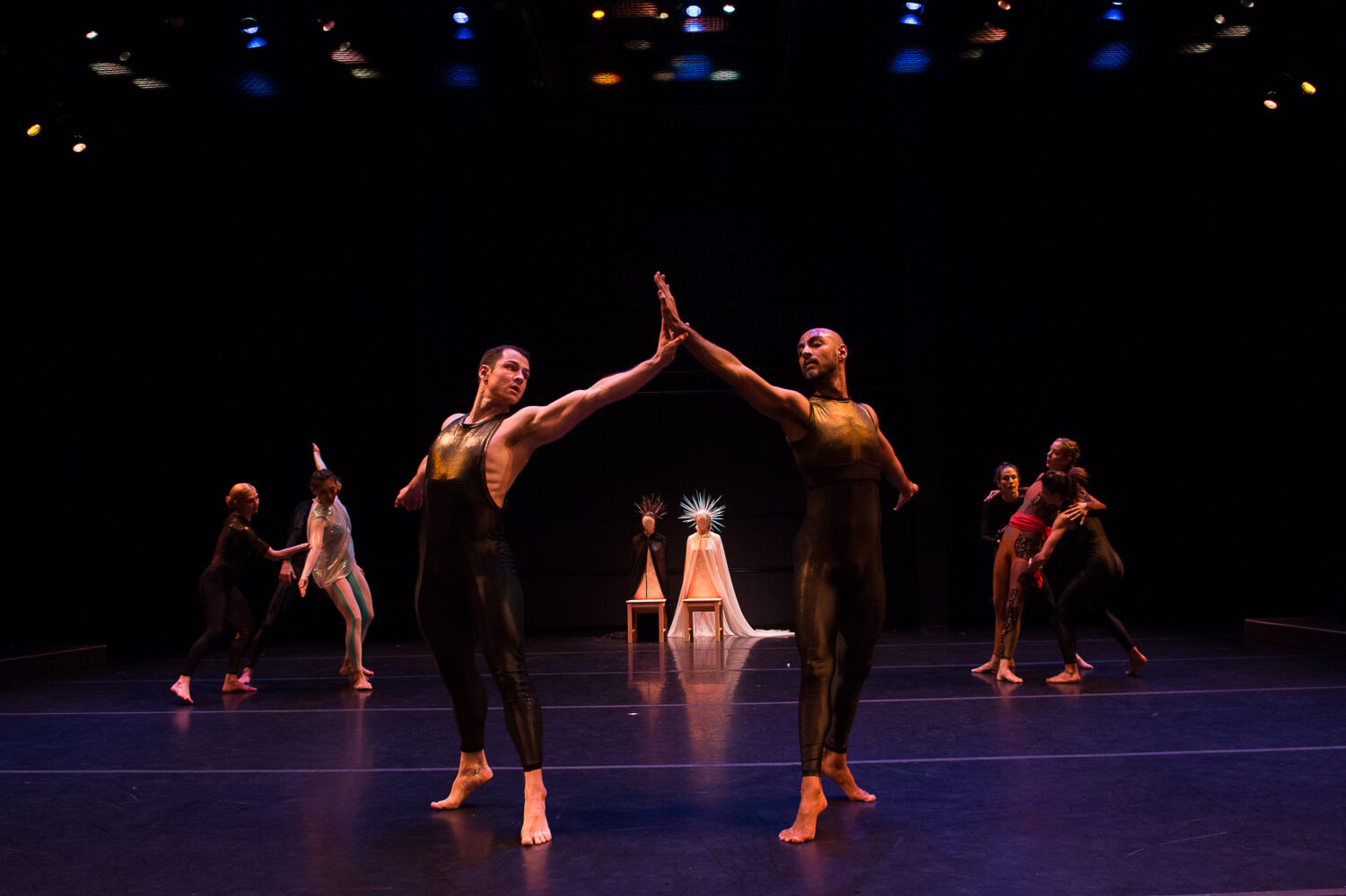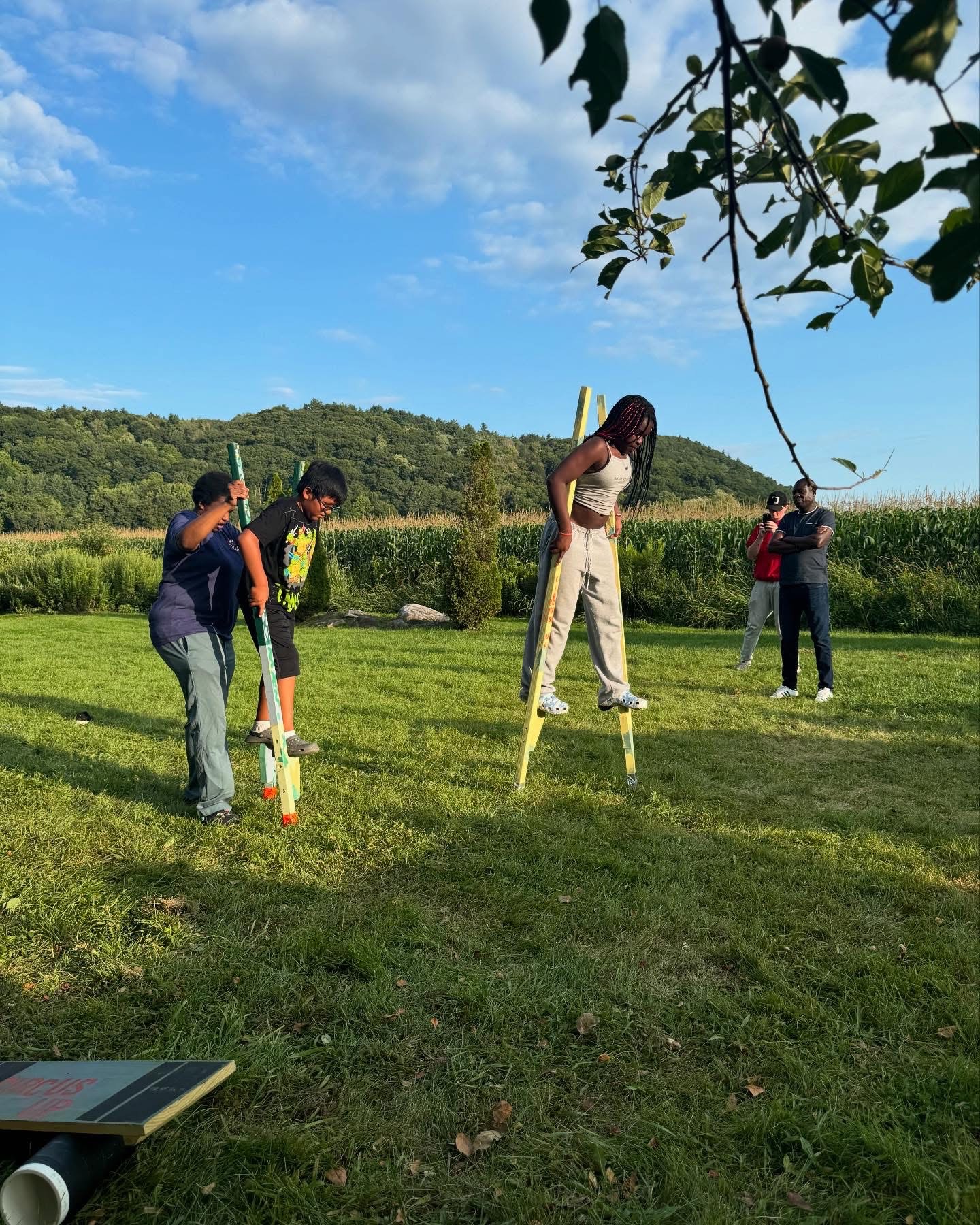Company One is a theater for the community on every level and, at the same time, they are not a Community Theater as it has come to be defined in the field. Instead Company One is a professional theater redefining what it means to serve a community, meeting people where they are. The company has chosen to partner with community anchors, such as the Boston Public Library and the Strand Theater in Upham’s Corner — to reach audiences who may not typically attend productions in the city’s theatre district. Company One transforms these spaces with original new works from playwrights who are from or reflect the diversity of the surrounding communities. In writing, this may seem like a pretty simple equation — but in practice it’s more complex.
Traditionally, theater business models rely on audience subscriptions, income from blockbusters, and even the halo effect from critic awards that elevate their reputation within the field. Unfortunately, these practices tend to work in opposition to a theater’s ability to engage diverse voices on stage and in audiences. Company One is doing theater differently—their approach is more participatory and collaborative, allows for cost sharing while deepening commitments, and at the same time lowers barriers to entry ensuring wider participation.
Building a Theater for the People
The lack of racial diversity in the theater world is startling: Audiences on average are almost 90% white. This is partially a direct result of the traditional business model that privileges attendance from certain groups (and therefore demographic) of theatergoers. It’s a disquieting statistic and one that Company One has set out to change. Company One intentionally embraces a new orientation—one that centers the importance of new voices, community partnerships, and accessibility. For its productions, it fills 58% of their theater seats in Boston with people of color, as compared to the 11% in other Boston-area theaters. Company One has also succeeded in bringing younger audiences into the theater-going fold. Over half of Company One’s audiences (52%) are under the age of 35, whereas about a quarter of audiences at a typical Boston theater company are in this younger demographic. How can other arts organizations follow suit?
We spoke with Shawn LaCount, Artistic Director, Karthik Subramanian, Managing Director, Summer L Williams, Associate Artistic Director, Mark Abby VanDerzee, Education Director, and Board Chair Nicole Gilmore, to learn more about their strategy on multiple fronts, which they encapsulate with the phrase “Public Art for Public Good.”
Company One has embraced three values that inform their choices to disrupt the old paradigms of theater. Shawn LaCount, Artistic Director and co-founder of Company One said, “we’re learning to be brave enough to trust the value system that we’ve made over the years. We’ve determined that earned revenue is more of a hassle than a benefit. And we’ve walked away from elitist accolades—community response is more valued to us.”
Mark Abby VanDerzee, Education Director and co-founder explains, “we are intentionally multi-racial and intentionally multi-generational on every level. Diversity and equity permeate both what is on stage and behind-the scenes in board meetings and staff meetings.”
Summer L. Williams, Associate Artistic Director and co-founder, emphasizes that they are guided by their mission to build community at the intersection of art and social change. The company develops bold new work featuring diverse playwrights and artists. They support the next generation of playwrights with Stage One In-School Residencies, and partner with local organizations to amplify the themes in their productions through post-show events. “We’re creating experiences designed to disrupt, connect, and invigorate our communities,” said Karthik Subramanian, Managing Director.

Wolf Play at Company One, photo credit: Andrew James Wang
Bringing new audiences to the theater with a radical strategy
Company One’s approach to making theater more affordable and accessible is a dramatic one, which shifts the organization away from relying on ticket sales and subscriptions for its revenue and instead builds coalitions of supporters to offer theater as a public good.
While most theater companies offer a designated number of tickets at a reduced “Pay What You Can” rate, Company One chooses to offer all tickets at a “pay-what-you-want” rate with a $0 minimum. Note the difference in language: with the latter, there is no public declaration of financial ability or socio-economic standing for the ticket buyer.
At Company One productions, the price that audience members pay online is completely discretionary. The hope and expectation is that some audience members will pay more than others, depending on their capacity. Company One does not shy away from asking for donations. There’s an orange envelope placed on each person’s seat in the audience at every show, and staff solicit donations, stating specific goals at the end of a performance: “Tonight we want to raise $500 or $1000 dollars, so if you can give, please do.”
For those who are unable to pay full ticket price, there are other ways of contributing to the theater company: Promote the show in your community or to your social networks, volunteer your time, or help connect the theater company to a neighborhood organization that could benefit from engaging with Company One. This strategy has been critical to changing who is able to come through the theater doors and to sit in its seats, and it’s made theater accessible to many more, regardless of financial resources.
Nicole Gilmore, Company One’s Board Director, is accustomed to taking on managed risks. “Anything in the arts is a frontier, a risky endeavor,” she shared. “At Company One, we’re on the frontier of identifying what’s next in terms of innovation and creative spaces. At the same time, we have to iterate in ways that are financially prudent, where we’re a good steward of donor resources and also a good steward of the earned income that we generate.”
To that end, Gilmore views their revenue model as a venture capitalist sees their portfolio. They ensure that there are other “verticals” or sources of earned or contributed income they can rely on such as education and training. In partnership with funders and with Boston-area school districts, Company One is working to expand its education programs, not only to reach more students, but to create multi-year pathways for them to explore their voice. Abby VanDerzee added, “In order to do the kind of transformational work that we’re hoping to do with young people, we want to commit to long term relationships with them. Dedicated funders who see the power of what we’re doing make that long-term impact possible.”
Casting authentically to build community
Historically, actors of color and differing abilities have been locked out of mainstream cultural representation, both in Hollywood and theater.
Associate Artistic Director Summer L. Williams said, “We are aiming to cast in a way that is the most authentic, truest, closest, version of whatever the piece is asking for, and also who’s authentically connected to the story.”
For example, for a play about a character that sustained a football injury and required the use of a wheelchair, Williams visited a support group at Massachusetts General Hospital for people with permanent spinal cord injuries and cast an individual who had lived experience in a wheelchair, but no acting experience. They enrolled him in Company One’s professional development program for actors.
Williams said, “It was a worthy risk. Who was going to be able to tell the truth of those moments any more clearly than that actor?”
Bridging the wealth gap for emerging artists
Let’s face it, training to become an actor or a playwright is expensive – learning the craft, workshopping ideas, the time off from work for residencies, coaching to prepare for auditions, professional headshots, etc. There’s a wealth gap between those who can afford these opportunities and those who cannot.
In response, Company One has been bridging this wealth gap through a program which provides free or low-cost professional development for actors. Over 400 local artists have participated in their 8-week Professional Development for Actors Program. Another way for aspiring theater artists to connect with Company One is to take one of their free online playwriting classes, which attract 60-100 people each month. The theater company has also developed residencies and lab programs, where emerging artists are commissioned to produce short term projects to help kickstart their careers. Company One prioritizes voices and stories from communities less represented in the theater world.
Company One’s staff also actively canvas the neighborhoods near their theaters, in hopes of discovering new artists, playwrights, and audiences. They literally strike up conversations about their work on sidewalks and at the pizza shop next door.
One hyper-local story emerged from these efforts, a play called “can i touch it?” written by Francisca da Silveira, a Cape Verdean playwright who tells a story about gentrification and black hair politics in Upham’s Corner and Nubian Square. The play comes directly from the writer’s own experiences growing up in Boston.
“It’s a play that centers small business owners of the Afro-Caribbean diaspora, local activists, and teens who take action against gentrification in Boston, folks who haven’t always been prioritized as audiences, as collaborators, as community members,” shared Managing Director Karthik Subramanian.
Company One aims to foster young artists’ sense of belonging in the community. In addition to training, they pair young artists with more experienced or acclaimed writers and actors in mentoring relationships and create opportunities for young artists to have facetime with industry veterans. “The idea is to build a true support network, thinking about ways that folks can feel they belong in community with us, with the art, and with each other,” says Subramanian.

Design Studio for Social Innovation; Projecting our Stories, Protecting Our Future
Producing Public Art for the Public Good
At the core of Company One’s work is their people-first, community-first approach and this has transformed who is coming through their doors. “All of this is a result of a paradigm shift in values and perspective,” said LaCount. By commissioning playwrights and casting actors of diverse backgrounds, employing a “pay-what-you-want” and subscription-free revenue model, building thoughtful community outreach and cross-sector partnerships, and offering accessible theater education and training opportunities, Company One has driven forward a model that treats theater-making as a public service—for good—designed to benefit all community members.
Expanding opportunities for participation by anyone that might be interested while instilling trust and investing in the longer term facilitates a sense of connectedness among artists, partners, and audiences alike. This radical approach brings Company One closer to realizing their vision of a “Theater for the People” that serves all of Boston and reshapes the creative landscape to be defined by justice, equity, and artistic innovation.



